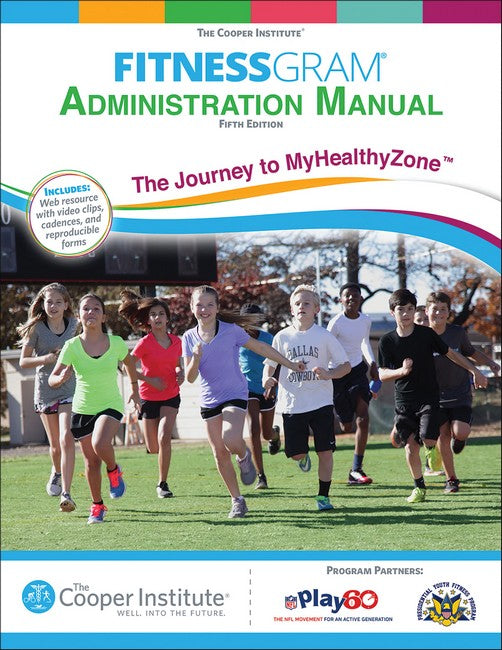The Cooper Institute is dedicated to promoting lifelong health and wellness worldwide through research and education. Founded by Kenneth H. Cooper, MD, MPH, The Cooper Institute translates the latest scientific findings into proactive solutions that improve population health. Key areas of focus are research, advocacy, adult education, and youth programs. Through these initiatives, The Cooper Institute will continue to help people lead better, longer lives now and well into the future. For more information, visit CooperInstitute.org. FitnessGram assesses youth health-related fitness and delivers personalized reports to students and parents. Developed by The Cooper Institute, FitnessGram was adopted by the Presidential Youth Fitness Program in 2012 and is used in schools nationwide. It serves as a student-centered assessment, reporting, and educational tool used in promoting health, fitness, and activity in children.
Request Academic Copy
Please copy the ISBN for submitting review copy form
Description
Part I Introduction to FitnessGram and ActivityGram Chapter 1. Mission, Goals, and Philosophy of the FitnessGram Program FitnessGram Chapter 2. Fitness Education and Assessment Guidelines Assessment Options for Fitness Education Effective and Appropriate Use of FitnessGram and ActivityGram Assessments in Physical Education Recommended Approaches for Program Evaluation The Fitness Education Process Step by Step Physical Education Resources to Support Use of FitnessGram Chapter 3. Promoting Physical Activity Importance of Promoting Physical Activity in Physical Education Physical Activity Guidelines Concepts for School Physical Activity Promotion The Youth Physical Activity Promotion Model Applying the Youth Physical Activity Promotion Model Reinforcement (Recognition and Motivation) Part II FitnessGram Assessment Model Chapter 4. Communicating With Stakeholders Strategies for Communicating the Fitness Education Process Communicating With Students Communicating With Parents Communicating With Faculty and Staff Communicating With Administrators Communicating With the Community Chapter 5. FitnessGram Test Administration Importance of Reliable Scores Considerations for Testing Primary Grades Considerations for Testing Secondary Students Considerations for Safety Testing of Large Groups or Classes Test Items Considerations for Testing Student With Disabilities Software Exemptions for Students Chapter 6. Aerobic Capacity Overview of the FitnessGram Aerobic Capacity Standards Progressive Aerobic Cardiovascular Endurance Run, PACER One-Mile Run Walk Test Chapter 7. Body Composition Overview of the FitnessGram Body Composition Standards Body Mass Index Portable Bioelectric Impedance Analyzers Skinfold Measurements Chapter 8. Muscular Strength, Endurance, and Flexibility Abdominal Strength and Endurance Curl-Up Trunk Extensor Strength and Flexibility Trunk Lift Upper-Body Strength and Endurance 90 degrees Push-Up Modified Pull-Up Flexed Arm Hang Flexibility Back-Saver Sit-and-Reach Shoulder Stretch Chapter 9. FitnessGram Physical Activity Questions Description of Activity Assessment Administration Chapter 10. Interpreting FitnessGram Results Derivation of Criterion-Referenced Standards Influence of Body Size and Maturity on Fitness Interpreting Performance on Physical Fitness Assessments Chapter 11. Understanding and Using FitnessGram Data Using Formative and Summative Assessments with FitnessGram Use of FitnessGram Data with Students Use of FitnessGram Data with Teachers Use of FitnessGram Data with Parents Use of FitnessGram Data with Administration Part III ActivityGram Assessment Module Chapter 12. ActivityGram Administration Description of ActivityGram ActivityGram Administration ActivityGram Lite (Youth Activity Profile) Chapter 13. Interpreting and Using ActivityGram Results Providing Feedback to Children on ActivityGram Limitations of the ActivityGram Assessment Interpreting ActivityGram Lite (Youth Activity Profile) Results Using Data from Physical Activity Assessments

